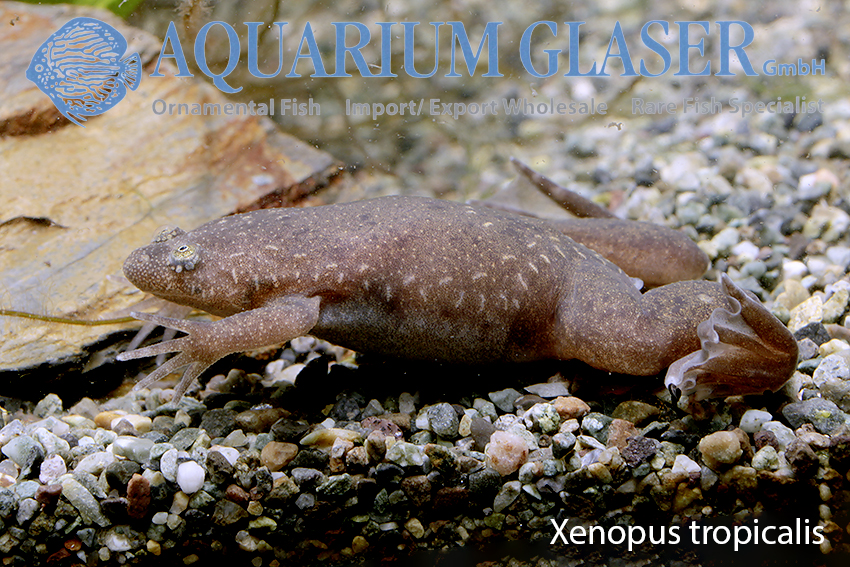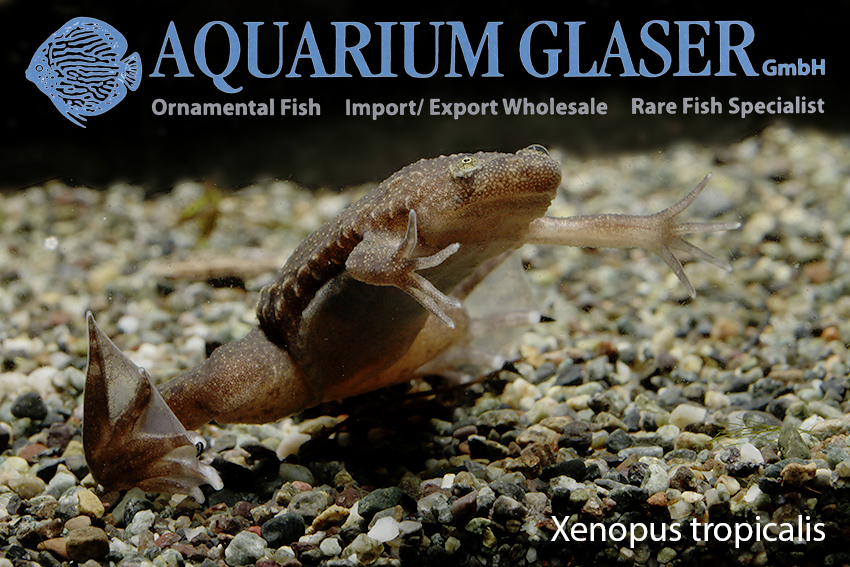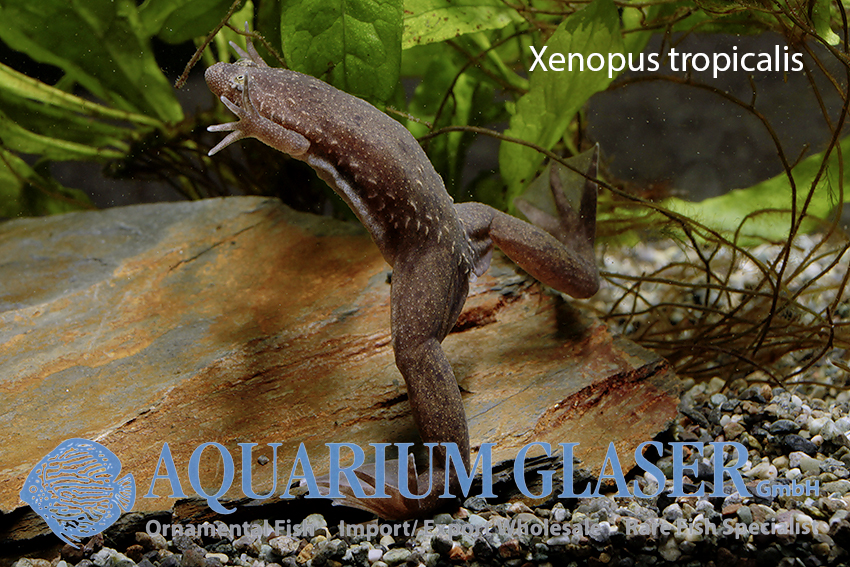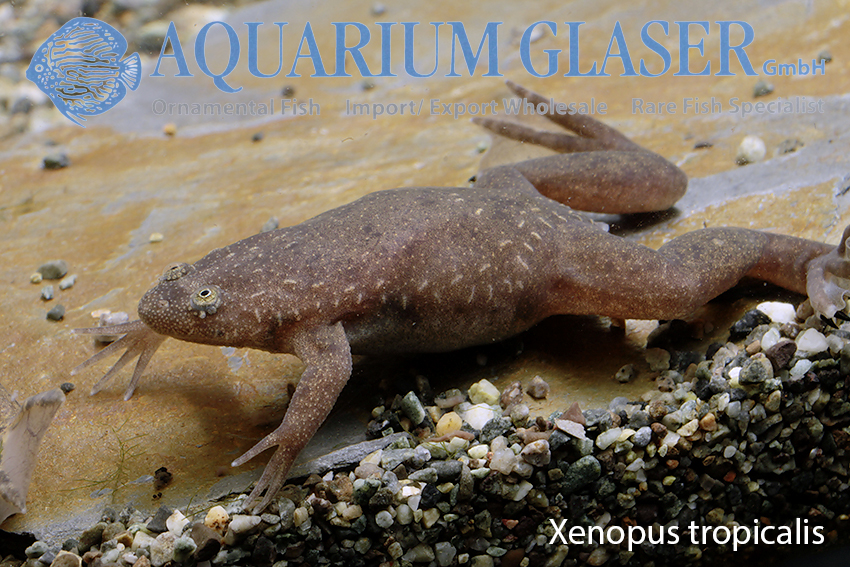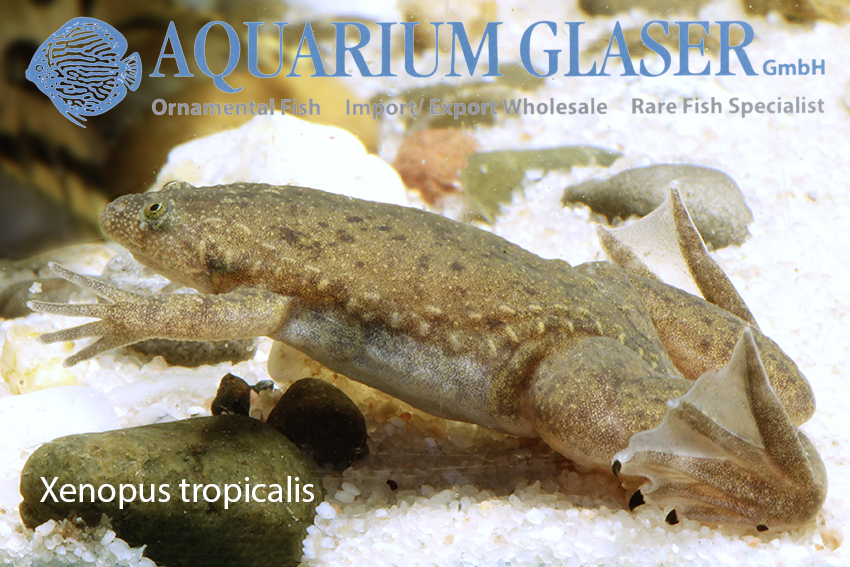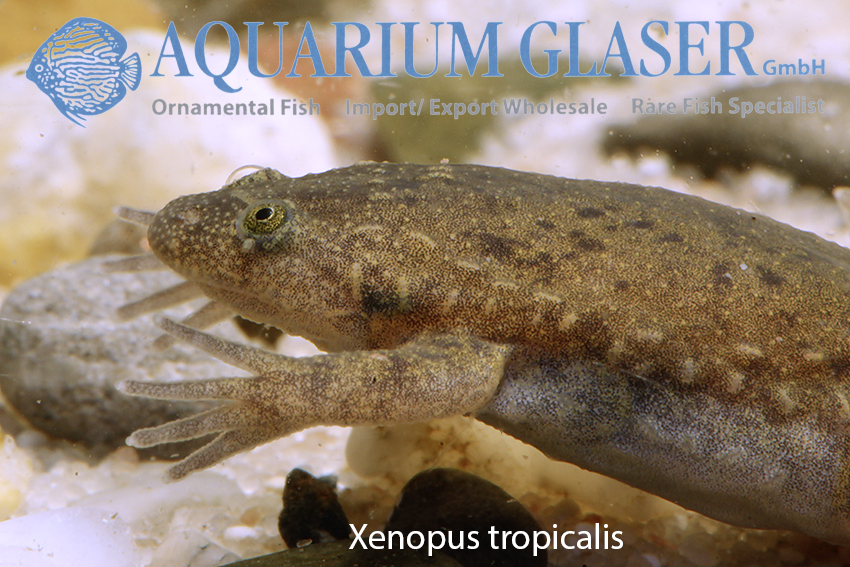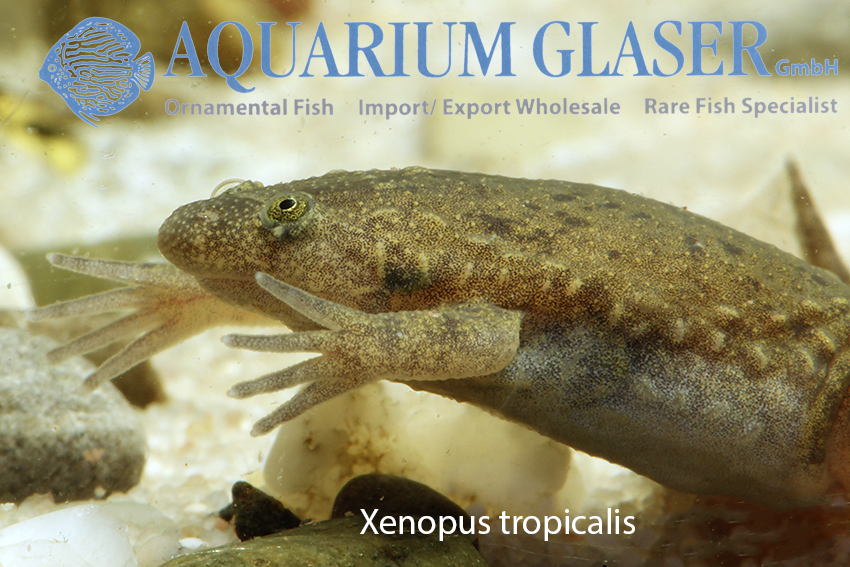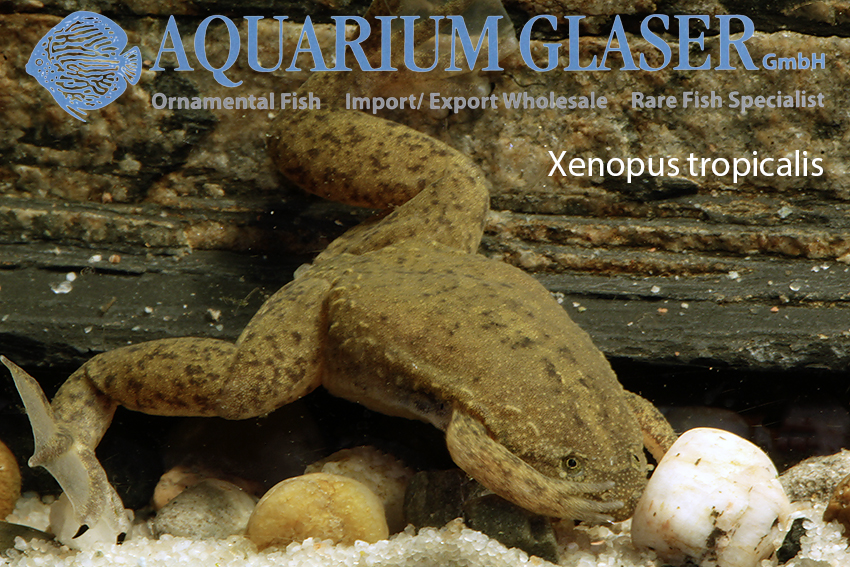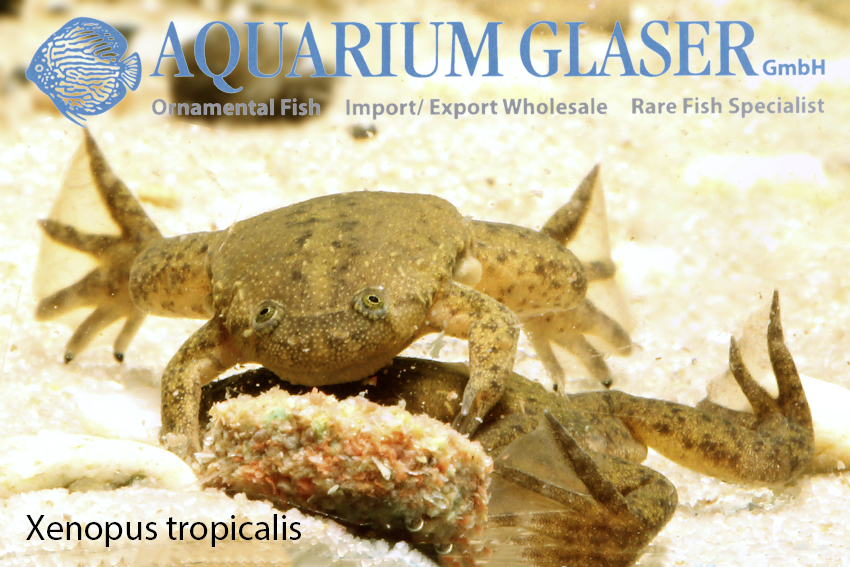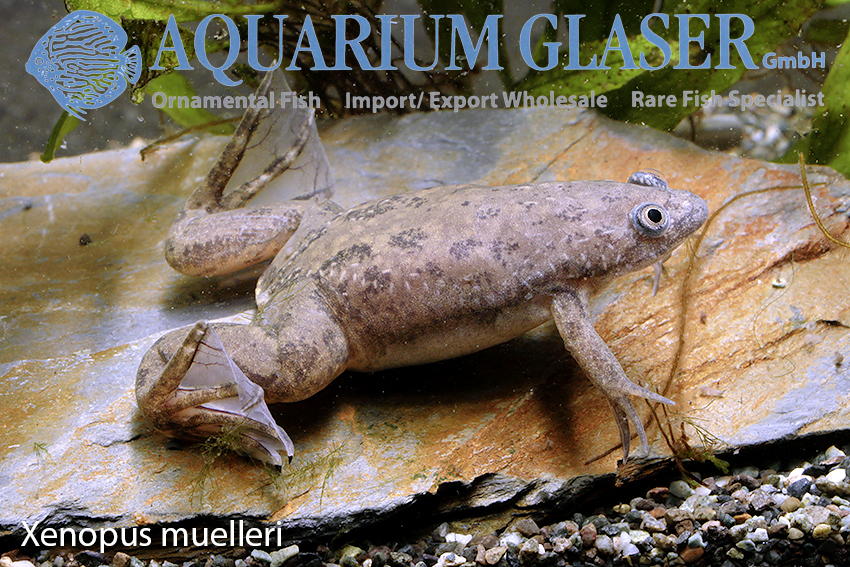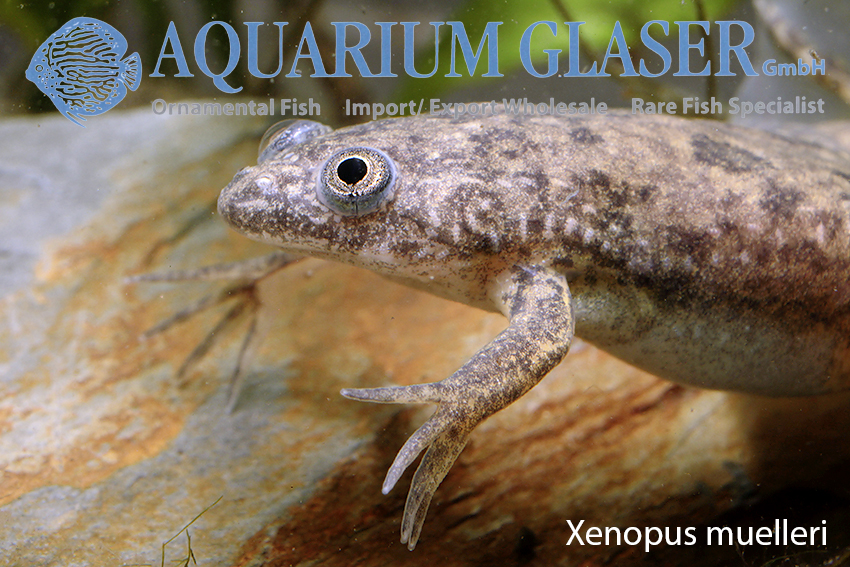Most likely, the trade of clawed frogs of the species Xenopus laevis will soon be banned because a reproducing population has been discovered in France. Due to climate change, it is now feared that this species could become invasive in Europe. To prevent this, the trade with this species should be prohibited.
We would like to point out to our customers that we usually do not trade Xenopus laevis, but the much smaller Xenopus tropicalis, even if it is/was listed as X. laevis. The determination of clawed frog species (there are 29 of them) is even specialists often only possible with biochemical methods (DNA analysis), therefore in the wholesale trade so far one has renounced an exact naming.
Xenopus tropicalis (often called Silurana tropicalis) is clearly different from Xenopus laevis. It grows only about 4 cm (X. laevis up to 15 cm), has smaller eyes and is a tropical species that could never survive a European winter. Some strains of Xenopus laevis, on the other hand, come from South Africa and can even survive sub-zero temperatures for short periods. We obtain X. tropicalis both as wild catch from Nigeria and as EU offspring or from Southeast Asia. Because of the good suitability of this small species for community aquariums with fish, it has largely replaced its larger cousin in breeding for aquarium purposes. X. laevis is mainly bred as a laboratory animal for medical research, and animals from these breedings have sometimes entered the pet trade.
Occasionally we have also the small (around 6 cm) Xenopus muelleri as offspring in stock. This tropical species remains allowed.
The care of Xenopus tropicalis is simple, it eats and tolerates any ornamental fish food, whether dry, frozen or live. It is peaceful, but will try to eat anything that fits in its mouth. Therefore fish, which you want to keep together with X. tropicalis, should not be smaller than 3 cm. It is very important to cover the aquarium completely. In case of air pressure fluctuations, the animals are overcome by a great wandering instinct and they then become perfect escape artists. Unfortunately, such excursions in living rooms usually end fatally.
Text & photos: Frank Schäfer





